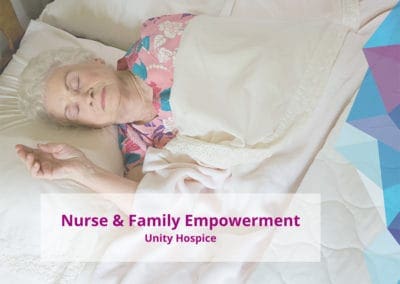Resolving Status Epilepticus in Minutes and Allowing for Caregiver Involvement at the Bedside
As a clinician, I felt very frustrated that both the patient and family were in distress and knew I needed to come up with a solution as quickly as possible.
Anna’s Nursing Background
I have been an RN for 2 years. I started my career in a pediatric ICU and recently transitioned into hospice.
I am a Case Manager at Heart ‘n Home Hospice & Palliative Care in La Grande, Oregon where I cover a very large rural area.
Symptom Chasing Gets Frustrating and Expensive
My patient was a 70-year-old female with a primary diagnosis of COPD and comorbidities of CHF, CAD, and DM. We had been successfully managing her dyspnea and pain for 6 months when she took a big decline. As she transitioned, she started having seizures, which quickly escalated to status epilepticus and left her unresponsive.
The onset of seizures were extremely distressing for the family, who were her primary caregivers.
Because of my background in critical care, I was very comfortable treating status epilepticus, and had done so many times. My first instinct was to use Diastat rectal gel; however, due to the high cost of the drug, it wasn’t available. IV meds were also not an option due to the time it would take to order and arrive at this rural location.
I first attempted to sublingually administer Xanax and Ativan (which I had at the bedside). However, I was not successful at controlling the seizures due to copious oral secretions, which prevented the absorption of the sublingual medications.
As a clinician, I felt very frustrated that both the patient and family were in distress and knew I needed to come up with a solution as quickly as possible.
The Macy Catheter Proves Easy to Use and Effective
Out of options in the home, I reached out to my Heart ‘n Home Clinical Director who recommended placing the Macy Catheter and administering the medications rectally.
After introducing the Macy Catheter as a way to help facilitate symptom relief, the family was very open to trying it with their loved one.
Though I had not received any formal training, I found it very easy to use and administer the meds just by following the Instructions for Use Manual in the kit.
After quickly inserting the catheter, I immediately gave a dose of the Valium through the catheter and her seizures subsided within 10 minutes!
Caregivers can Administer Medications via the Macy Catheter
I was impressed and relieved at how quickly this route of administration worked.
Most importantly, the family was extremely relieved to see their loved one resting comfortably for the first time in 6-8 hours.
At Heart ‘n Home, caregiver education is extremely important; we want the caregivers to feel confident in their ability to provide care. I taught the family how to administer medication via the catheter to keep the patient comfortable and treat breakthrough seizures if needed.
They were completely comfortable giving medications and were able to keep their loved one at home until she passed peacefully several hours later, seizure-free and surrounded by loved ones.
































